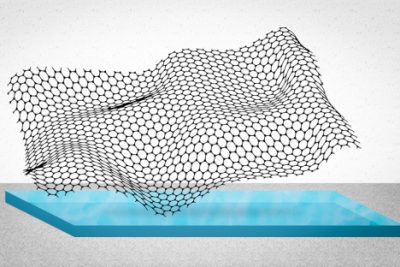
Mohammad Mahdi Tavakoli, Giovanni Azzellino, Marek Hempel, Ang-Yu Lu, Francisco J. Martin-Martinez, Jiayuan Zhao,Jingjie Yeo, Tomas Palacios, Markus J. Buehler & Jing Kong
DOI: 10.1002/adfm.202001924
Abstract:
A roll-to-roll (R2R) transfer technique is employed to improve the electrical properties of transferred graphene on flexible substrates using parylene as an interfacial layer. A layer of parylene is deposited on graphene/copper (Cu) foils grown by chemical vapor deposition and are laminated onto ethylene vinyl acetate (EVA)/poly(ethylene terephthalate). Then, the samples are delaminated from the Cu using an electrochemical transfer process, resulting in flexible and conductive substrates with sheet resistances of below 300 Ω sq−1, which is significantly better (fourfold) than the sample transferred by R2R without parylene (1200 Ω sq−1). The characterization results indicate that parylene C and D dope graphene due to the presence of chlorine atoms in their structure, resulting in higher carrier density and thus lower sheet resistance. Density functional theory calculations reveal that the binding energy between parylene and graphene is stronger than that of EVA and graphene, which may lead to less tear in graphene during the R2R transfer. Finally, organic solar cells are fabricated on the ultrathin and flexible parylene/graphene substrates and an ultra-lightweight device is achieved with a power conversion efficiency of 5.86%. Additionally, the device shows a high power per weight of 6.46 W g−1 with superior air stability.
